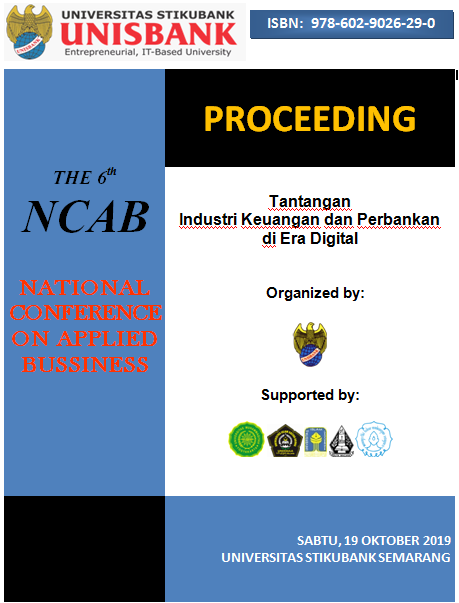INNOVATION CULTURE, ABSORPTIVE CAPACITY, INFORMATION TECHNOLOGY ADOPTION AND SUSTAINABLE COMPETITIVE ADVANTAGE
Abstract
Sustainable competitive advantage is very important for Indonesian SMEs (small and medium enterprise) to face challenges and opportunities for world free market competition. Sustainability is defined as a long-term competitive advantage not only for today but must continue to run on an ongoing basis by utilizing all potential internal capabilities and then adjusting it to the company's external conditions. The company's sustainable competitive advantage will be achieved through its position of resources and capabilities. Likewise, Batik SMEs in Central Java and DIY, to be able to compete must be able to see and plan their business carefully, improve managerial skills and human resources. Determining the business strategy to be a winner, not as a follower, successfully seize the market with products and services that are different and unique, providing benefits or added value and solutions for customer needs is very important. However, most of Batik SMEs are not fully aware that a very important and decisive tangible resource is a culture of innovation, whose formation process is highly dependent on the characteristics of corporate leaders who can lead to adapt to new and criticizing environmentsto resources to engage in innovative and creative endeavors. This study aims to develop theoretical and empirical models, describe and analyze the influence of innovation culture variables on absorptive capacityvariables, information technology adoption variables, the effect of absorptive capacityvariables and information technology adoption variables on the sustainable competitive advantage of SMEs in Central Java and DIY Batik industries. This type of research will use explanatory research, which measures the effect of variables to test the proposed hypothesis. The data collection method will use interview techniques through a questionnaire consisting of 26 question items or indicators and measured using a Likert Scale, starting with a score of 1 which means strongly disagree with a score of 5 which means strongly agree. The analytical method will uses Partial Least Square (PLS).

